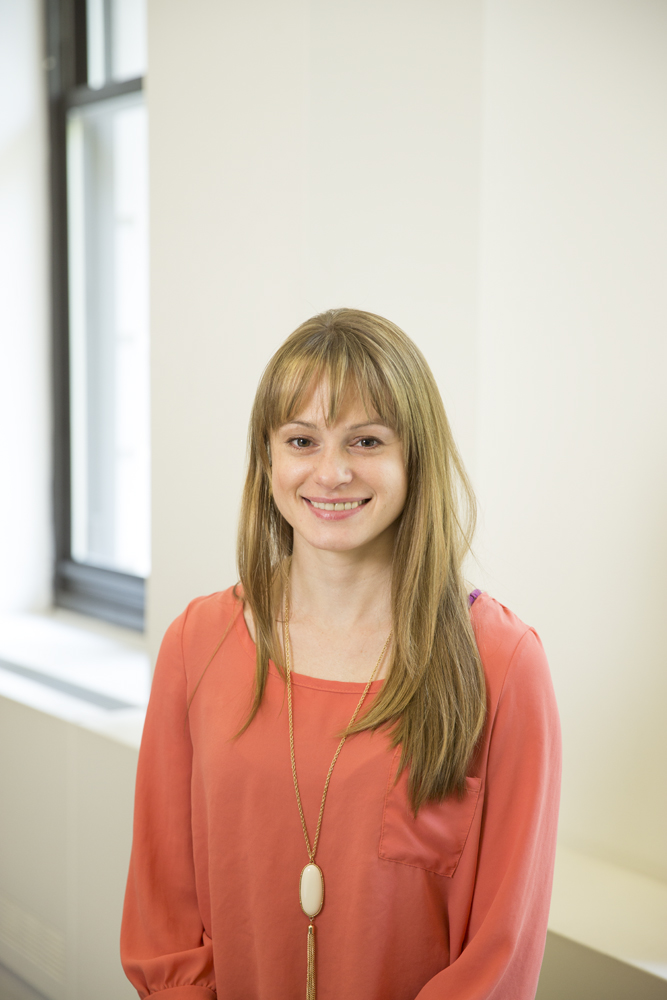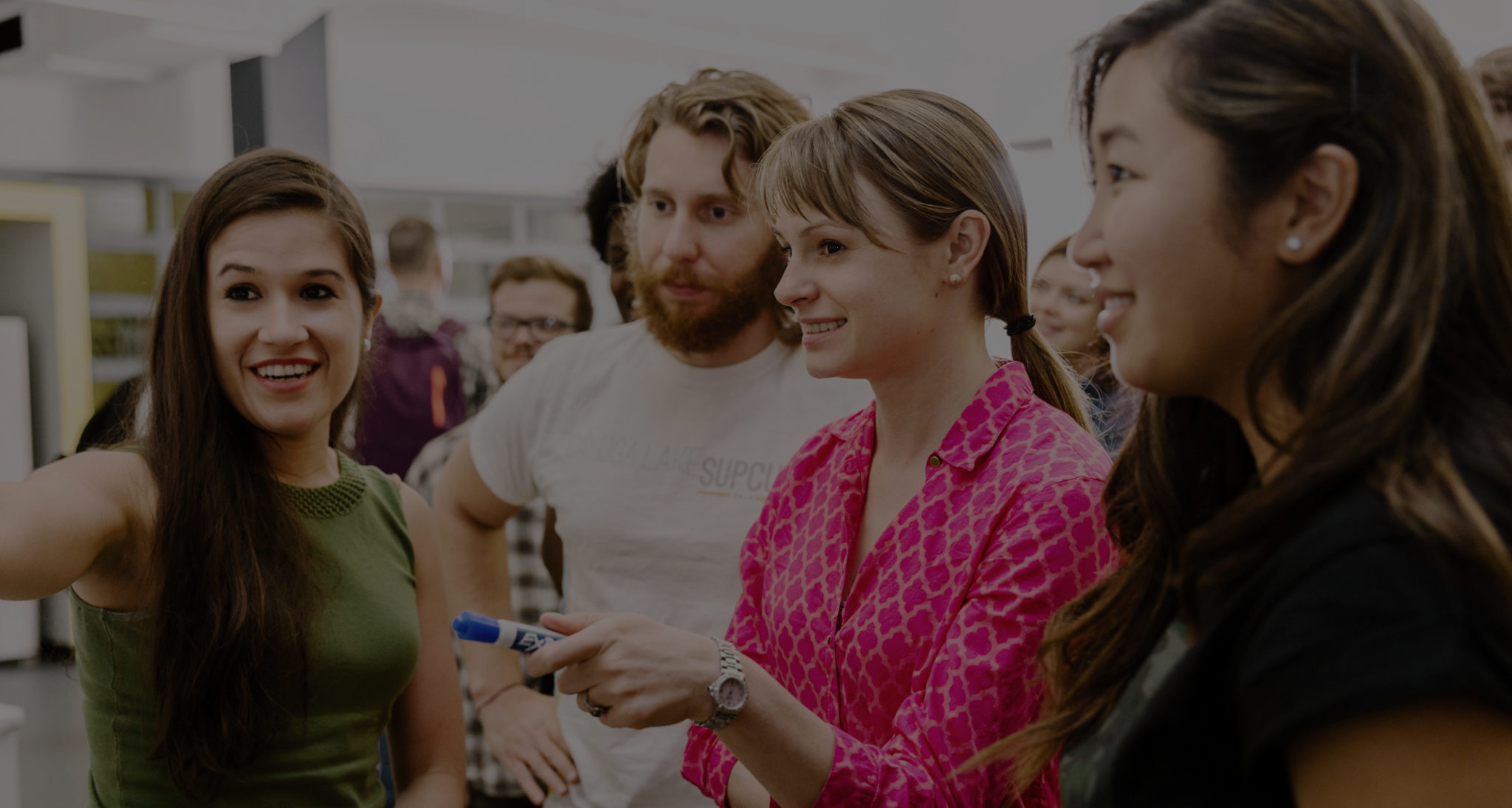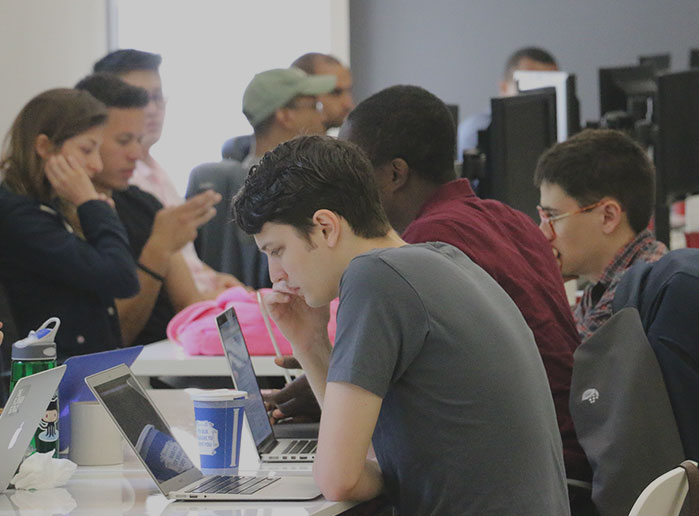In the next few weeks, Flatiron School instructor Leigh Scherrer is going to be contributing stories to our blog. Before then, we wanted to take a moment to chat with her about her path from healthcare communications to coding, how she decided to become an instructor here at Flatiron School, and why she’s excited to start blogging for us.
 First of all, what do you teach here at Flatiron School?
First of all, what do you teach here at Flatiron School?
I teach full-stack web development in our immersive program.
Tell me about your background. What was your career prior to programming and teaching programming?
Before I came to Flatiron School, I was working in healthcare communications as a writer. The last job I had before coming to Flatiron School was at a health insurance company doing corporate communications. The bulk of it was employee communications. We had a daily newsletter I sent out to our 4,000 employees. I also wrote articles for local newspapers highlighting the benefits of our different plans. I wrote brochures, stuff like that. It was a lot of writing and interviewing people.
Walk us through how you decided to go from that role to pursuing coding.
I got into programming because one of my responsibilities in a previous role was managing our company website. I started playing around with the code and I found that it was fun, interesting, challenging—and easier than bugging our web developer every time we needed to make a little change. After about a year of teaching myself the basics and taking a few classes, I realized I wanted to make a career out of it. That’s when I left my career in healthcare communications and came to Flatiron School.
How did you decide to attend Flatiron School in particular?
I decided to come to Flatiron School because I knew someone who had gone through the program. My husband is actually a developer and he had a connection in the tech industry whose his wife had attended Flatiron School and had a fantastic experience. And she had also come from a non-technical background: she was a journalist. I was encouraged knowing she had a similar background and had gotten a great skillset out of the program that set her on a promising career path. I came to an information session at Flatiron School to learn more about it and also started doing some of Flatiron’s free online exercises. I was really impressed with the quality of the platform and technology, and soon enough, I was attending the program myself!
What was your experience learning to code with a non-technical, somewhat untraditional background?
I think there are a lot aspects of programming that require a similar skillset to what I was doing before: attention to detail; being able to look closely at text and understand it. I think that that’s similar to writing. My communications background came in handy for writing the blog posts that were part of the program and Flatiron Students Presents. That was a great asset. Having a communications background helped me speak technically, which is a big part of the program.
That said, it’s very different, but I think coding is a lot about thinking logically. I think any background that requires you to think logically about a problem is helpful. And there are lots of people in the program who have similar backgrounds to mine. You have artists, musicians, and people who pursue all kinds of different, creative things. I didn’t feel out of place at all.
What was your favorite part of learning at Flatiron School?
The quality of the instruction was really outstanding. I had spent a long time learning on my own and taking online classes. My developer husband had been trying to teach me for a long time, but there were certain fundamental concepts that I didn’t understand until I came here and had them explained very clearly by my teacher, who was awesome. He explained the concepts clearly and then I practiced implementing the concepts in code. For me, a turning point in my coding education was learning object orientation, which I had been trying to understand on my own, but it didn’t really click until I was here. So the quality of instruction was huge for me—and that’s part of why I wanted to be a teacher here. I understood the power of having excellent instructors. It makes all the difference in the world when you’re trying to learn how to code.
The other thing that was really important was the community. I just absolutely loved everybody in my class. It was a great group of people. It’s a testament to the admissions process. And I think that you get very close with your classmates because you’re with them all day, every day, trying to do something challenging. There are also lots of structural aspects of the program that encourage you to develop strong relationships with people in the class, like Feelings Friday, pair programming, and group projects. All that stuff really helps you build relationships with people in the program.
How did you decide to stay here at Flatiron School to teach? Did you always know you wanted to teach?
Definitely not; I never imagined I’d be a teacher. Both of my parents are teachers, so I was always very confident that that would be the one job that I would not do. But when the program came to an end, and I was looking back on my time here, and I saw I was so happy here. I love the school, I love the community, I love the people. I love how it’s a group of really passionate, smart, hardworking people trying to help people make a big transformation in their professional lives. I realized I didn’t want to leave. I wanted to stay and help other people have an outstanding experience as well. So when I heard Flatiron School was hiring Instructors, I decided to stay and help other students learn how to code.
What’s your favorite part of teaching?
Working with the students and seeing how much they grow over the course of the semester. You see enormous growth in their skills in just a couple weeks. It’s just awesome to see because they start at the beginning and they’re still struggling with the basics. It’s great to work with them through that process and see them get better, and witness the amazing things they build at the end of the semester. I’m always impressed with their final projects.
With that in mind, the science fair where students showed off their final projects was awesome!
Yeah, they were great. They were even more impressive when you realize the projects were all built with Ember, which is a JavaScript framework that’s very challenging. They were phenomenal.
[You can check out some of the amazing students projects in these earlier blog posts: 1, 2]
What was your biggest challenge when learning to code?
The hardest thing for me when I was in the program was that the concepts were so new from things I had learned before. I was always a strong student, so I was used to just getting things immediately—going to class, listening to a concept, and understanding it. In programming, it doesn’t really happen like that. It takes time for your brain to process the concepts and translate them. So I’d get frustrated with myself, not understanding them right away. The hardest part is that you just have to recognize that it’ll take time and not get frustrated. And it still takes me a long time when I’m learning a new concept, like a different framework. It just takes a while for your brain to process the information. The biggest difference is that now I’m better at not getting frustrated. I recognize it takes a while.
Any tips for aspiring programming students?
I have so many tips. That’s a tough question because there are so many!
It’s almost like you should start writing blog posts about them…
[Laughs] How do I pick one… I would say: code as much as you can. Try to tackle different problems, try to solve them in different ways, try to code every day. Read about code as much as you can.
Any resources you recommend?
I’d recommend trying out a bunch of different resources. When I started learning to code, I used Code Academy, which is great because it’s free and can introduce the language syntax. I also tried solving challenges on CoderByte, which was great because it starts to get you thinking programmatically about problems. Those are two important ways to see if you enjoy coding when you first start learning: figuring out the syntax and representing and actually solving some simple problems. And of course, Learn. Learn wasn’t around when I started learning to code but I wish it had been. I think the free Intro to Ruby track gives a great overview of the concepts.
How does your previous career in communications inform your programming? Your teaching?
I think both teaching and communications require being able to translate complex concepts into simple language and make analogies. In that sense, I think they’re similar. I don’t think there’s a direct relationship. But I think they do rely on similar skills.
Finally, what makes you want to write for the Flatiron School blog?
After I finished the program and became a teacher, I looked back at my time as a student. When you’re a student, it goes so fast, you’re trying to figure out what you can do to be the most successful. Being an instructor gave me a new perspective on some of the things I wish I had done differently if I had known about them when I was a student. So I thought it would be helpful to share some of that insight for prospective students. I want to help them get the most out of the program.
Look out for Leigh’s upcoming blog posts right here!
Written byJOSH HIRSHFELD
Content Marketing Manager, Flatiron School

